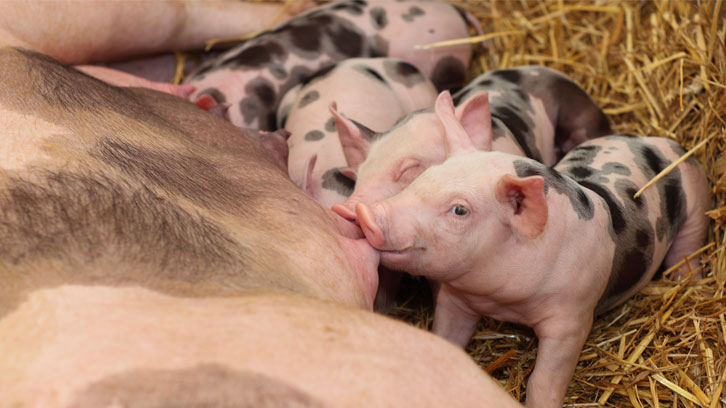Postnatal Persistent Infection with Classical Swine Fever Virus and Its Immunological Implications

Author: iStockphoto/Sage78.
Despite intensive vaccination programs in some endemic countries, Classical Swine Fever (CSF) has not been eradicated, due to failures in the responses to vaccination associated with poor handling of the vaccine, among other issues. Moreover, the virus (CSFV) tends to evolve towards low virulence variants that circulate and persist in the pig population in association with common porcine infectious diseases. CSFV persistence in offspring after trans-placental infection during mid-gestation has been well documented, contrary to postnatal infection.
The aim of the present study was to evaluate the ability of CSFV to induce viral persistence upon early postnatal infection. Two litters of 10 piglets each were infected intranasally on the day of birth with low and moderate virulence CSFV isolates, respectively. During six weeks after postnatal infection, most of the piglets remained clinically healthy, despite persistent high virus titres in the serum. Importantly, these animals were unable to mount any detectable humoral and cellular immune response. At necropsy, the most prominent gross pathological lesion was a severe thymus atrophy.
Four weeks after infection, PBMCs from the persistently infected seronegative piglets were unresponsive to both specific CSFV and non-specific PHA stimulation in terms of IFN-γ-producing cells. These results suggested the development of a state of immunosuppression in these postnatally and persistently infected pigs. However, IL-10 was undetectable in the sera of the persistently infected animals. Interestingly, CSFV-stimulated PBMCs from the persistently infected piglets produced IL-10. Nevertheless, despite the addition of the anti-IL-10 antibody in the PBMC culture from persistently infected piglets, the response of the IFN-γproducing cells was not restored. Therefore, other factors than IL- 10 may be involved in the general suppression of the T-cell responses upon CSFV and mitogen activation. Interestingly, immature bone marrow granulocytes increased and were targeted by the virus in persistently infected piglets.
Here, we show that persistently infected piglets could be generated following infection with two different CSFV field isolates (of low and moderate virulence) on the day of their birth. These piglets remained healthy for several weeks, without any specific immunological response to CSFV and with high virus loads in the blood, organs and body secretions. In this context, persistently infected pigs might play an important role in virus dissemination. Some of these piglets developed fever peaks during the first 15 days post-infection and non-specific clinical signs and lesions, mostly associated with secondary bacterial infections.
Taken together, we provide the first data demonstrating the feasibility of CSFV generating a postnatal persistent disease, which has not been shown for other members of the Pestivirus genus yet. Since serological methods are routinely used in CSFV surveillance, persistently infected pigs might go unnoticed, due to the inability of these infected animals to generate a detectable immune response. In addition to the epidemiological and economic significance of persistent CSFV infections, this model will be useful for understanding the mechanisms of viral persistence.
Centre de Recerca en Sanitat Animal (IRTA-CReSA)
References
Muñoz-González, S.; Ruggli, N.; Rosell, R.; Pérez, L.J.; Frías-Leuporeau, M.T.; Fraile, L.; Montoya, M.; Cordoba, L.; Domingo, M.; Ehrensperger, F.; Summerfield, A.; Ganges, L.Postnatal persistent infection with classical Swine Fever virus and its immunological implications. PLoS One. 2015, vol. 10, num. 5, e0125692. doi: 10.1371/journal.pone.0125692.


